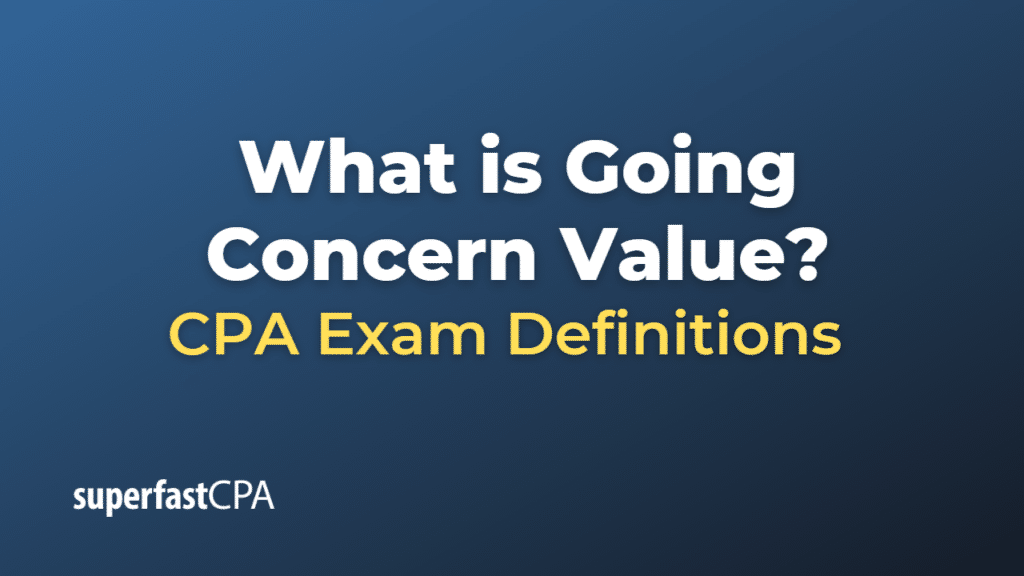Going Concern Value
The Going Concern Value is a type of valuation method for a company that assumes the company will continue its operations into the future and will not be liquidated. This valuation method takes into account a range of factors including future profitability, the current cash flow, and the intangible assets, like the company’s brand, business relationships, patents, and technology.
Under the Going Concern Value, assets are assessed not based on their liquidation value, but rather on their contribution to the company’s ability to generate future earnings. The value also incorporates any potential growth opportunities, efficiency improvements, and synergies the company may have.
It’s generally higher than the liquidation value (which only considers the net cash that would be received if all assets were sold and liabilities paid off) because it includes the profit the company could make by continuing to operate as a going concern.
For instance, a manufacturing company has physical assets like property, plant, and equipment. If the company were to liquidate, the value of these assets might be significantly less than if they were used in ongoing operations to generate revenue. Therefore, the Going Concern Value would be higher because it considers the company’s potential to generate future earnings, not just the liquid value of its assets.
However, estimating the Going Concern Value can be complex, as it involves making assumptions about future market conditions, the company’s performance, and other variables. Therefore, it should be performed by a financial professional or business appraiser who is experienced in valuing businesses.
Example of Going Concern Value
Imagine there’s a company, “Omega Tech Ltd.”, a software development firm that has been in business for several years. The company has valuable intangible assets like an established customer base, skilled employees, proprietary software, and a recognized brand.
Now, let’s say the owners of Omega Tech Ltd. want to sell the company and are looking to estimate its value. To do so, they’ll likely use a Going Concern Value approach.
- Future Profitability: First, they would look at the company’s earnings forecasts and financial projections. Let’s assume the company has a steady revenue stream from its existing software licenses and service contracts, and the future profitability is promising.
- Current cash flow: Next, they would analyze the company’s current cash flow. Despite the costs of ongoing operations, the company is generating positive cash flow from its activities.
- intangible assets: Lastly, they would factor in the value of the company’s intangible assets. For example, Omega Tech Ltd. has a strong reputation in its market, a talented team of software developers, and proprietary software technology.
By considering these factors, they would likely come up with a Going Concern Value that’s much higher than what the company’s physical assets would bring in a liquidation scenario. That’s because the value isn’t just in the company’s tangible assets – like office equipment or real estate – but in the future earnings potential from its intangible assets and ongoing operations.
This is a simplified example, and actual business valuations can be far more complex. They can involve in-depth analyses of a company’s financial statements, market conditions, competition, the economy, and other factors. As always, professional guidance should be sought for such activities.












